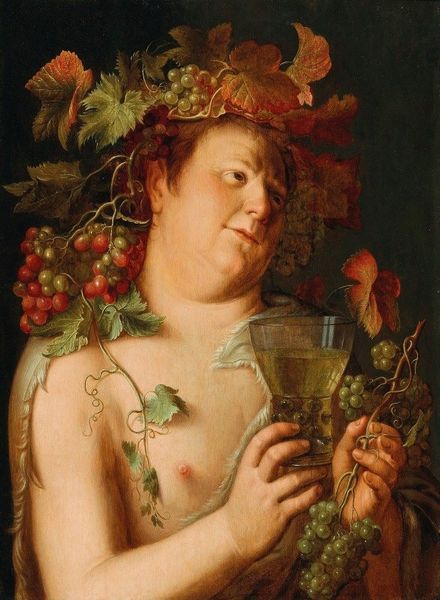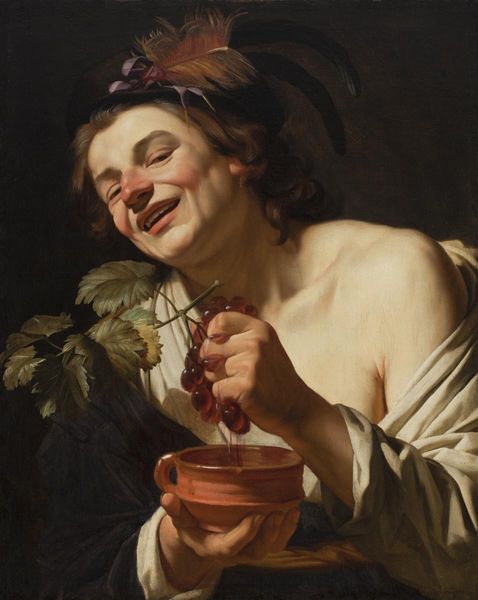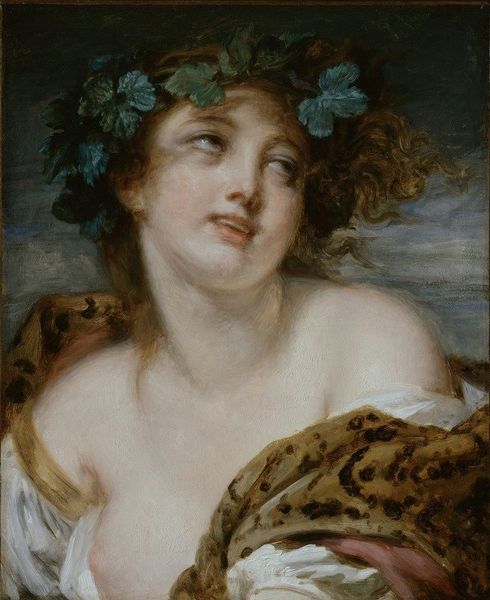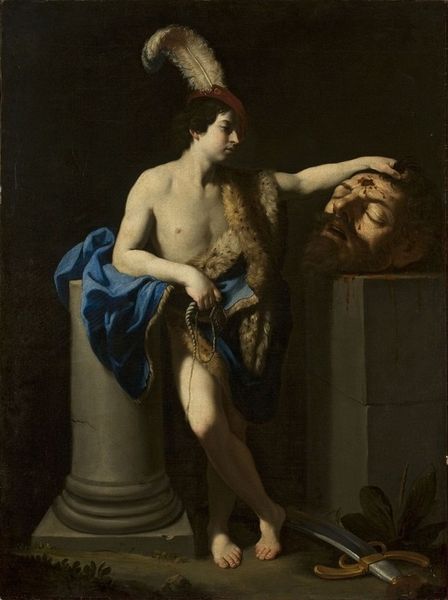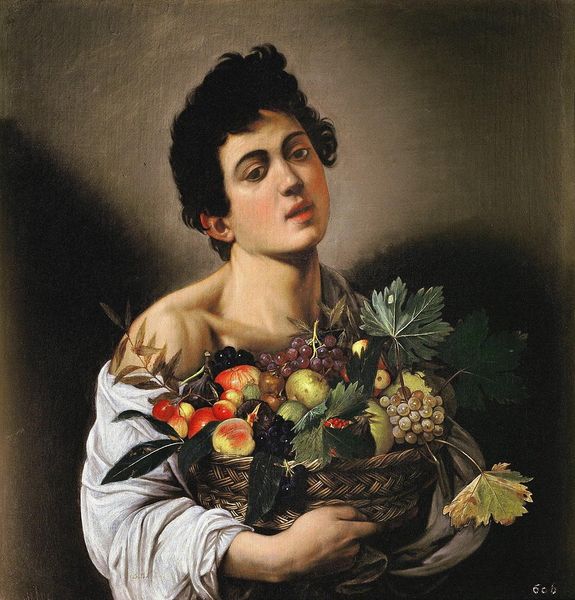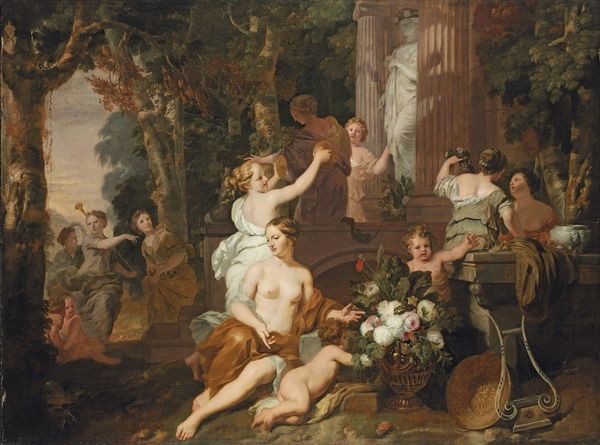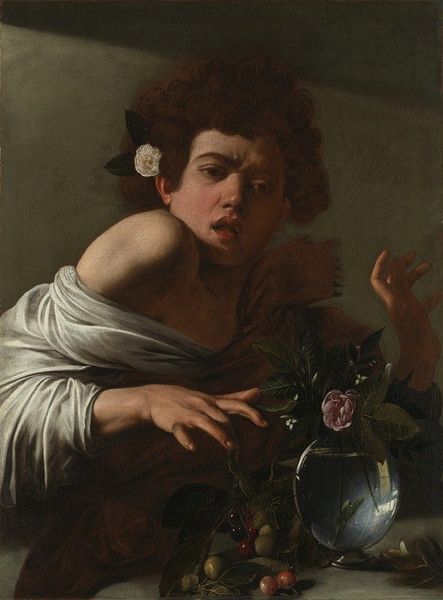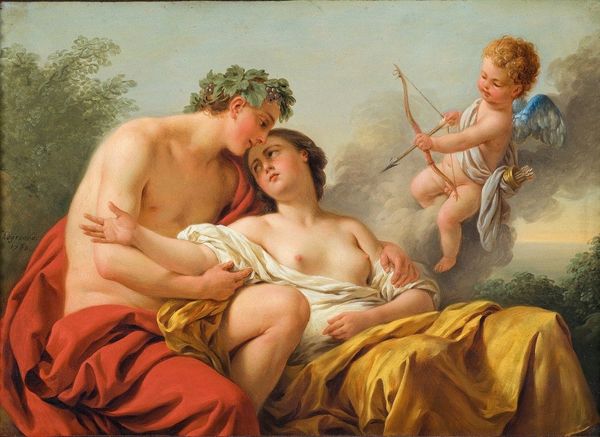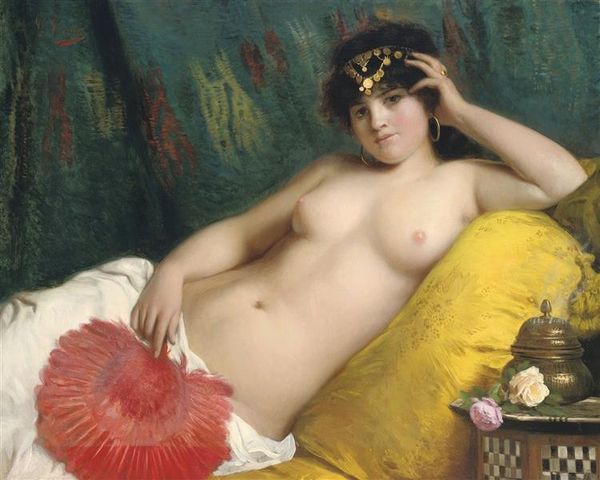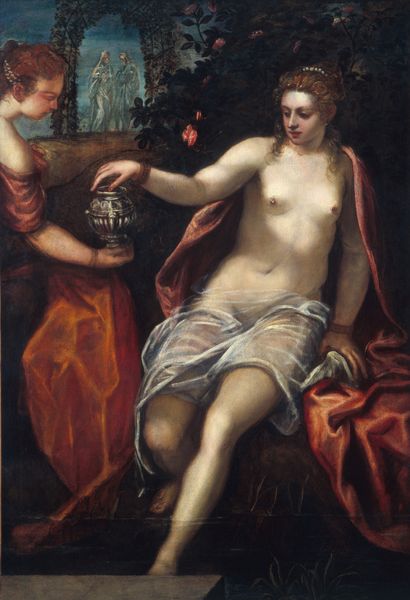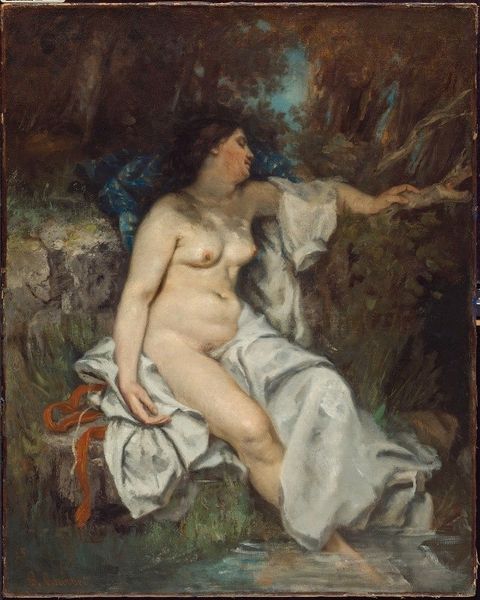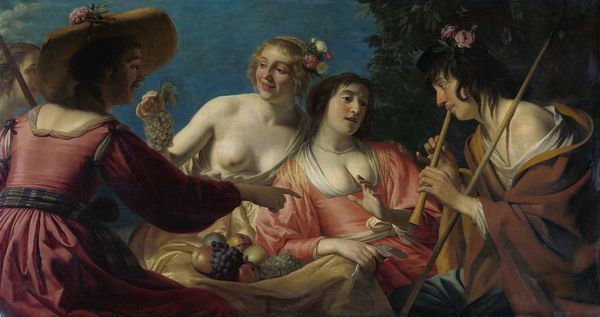
painting, oil-paint
#
portrait
#
allegory
#
baroque
#
painting
#
oil-paint
#
oil painting
#
mythology
#
italian-renaissance
#
nude
#
portrait art
Copyright: Public Domain: Artvee
Editor: Here we have Caravaggio's "Bacchus," painted around 1598, a striking oil painting. What I find particularly fascinating is the almost unsettling blend of the idealized god with what appears to be a very human, almost gritty, realism. What jumps out at you when you look at this painting? Curator: Well, seeing "Bacchus" through a historical lens, I'm struck by how Caravaggio both embraces and subverts classical ideals. The figure of Bacchus, the god of wine and ecstasy, is of course, a classical subject, linked with wealth, power, but the setting? Is this not a subtle comment on the church’s patronage of the arts and perhaps his own social standing at the time? Editor: The grapes and his somewhat dirty fingernails are such a curious contrast. Why portray a god this way? Curator: Precisely. It's a challenge to the traditional artistic hierarchy. The realism you noted doesn't just depict, it *comments*. This naturalism, pushed to its extreme, politicized this painting, elevating the everyday and even the vulgar and perhaps challenging the very notion of divinity and power structures of that time. Does the offering of the wine in the goblet to the audience, also mean something deeper? Editor: So, he's democratizing the divine? The wine goblet extending into the space of the viewer perhaps invites a certain social critique, then? It makes one wonder about the artist's intention, challenging art history itself! Curator: Exactly! The "Bacchus" is then not just a representation, it's an active participant in a broader cultural conversation, questioning the norms of art and society itself. Editor: That's such an interesting angle, shifting the focus from mere aesthetic representation to the painting's role in sparking social dialogues. Thanks, that has really reframed how I see the painting now! Curator: My pleasure. Art history allows us to do more than passively witness, it actively promotes analysis of how the artwork contributes to public discussions on art, power and imagery.
Comments
No comments
Be the first to comment and join the conversation on the ultimate creative platform.
